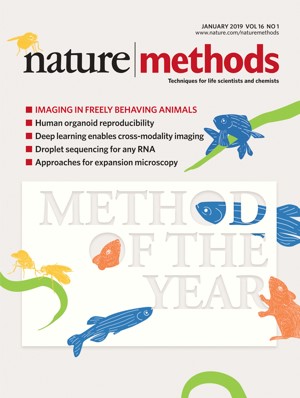In the run up to the New Year, numerous magazines, journals, and news outlets looked back over the scientific achievements of 2018 and looked ahead to what we can expect from science and technology in 2019. Multiple BRAIN Initiative projects and discoveries made these “Best of” and “Things to Watch” lists. A handful of projects even topped some rather prestigious lists. Below is a rundown of the accolades handed out to our hard-working researchers over the past couple of weeks.

Science names single-cell analyses of gene activity over time its “Breakthrough of the Year” for 2018 and highlights work by BRAIN Initiative scientist Alexander Schier (Harvard University, Allen Institute) that illuminates cells in the developing zebrafish embryo.

Among Science’s favorite stories of the year was one that gets you right in the gut. You may think your gut has a mind of its own—especially when it wakes you up in the middle of the night in search of brownies. This isn’t too far from the truth, finds Science’s most popular research article of the year. Our gut has a direct connection to our brain through a neural circuit that allows it to transmit signals in mere seconds. The findings, from Duke University’s Xiling Shen and Diego V. Bohórquez who were funded in part by the BRAIN Initiative through DARPA’s ElectRx program, could lead to new treatments for obesity, eating disorders, and even depression. Original research paper (September 2018).

In naming “Imaging of Neural Activity in Freely Behaving Animals” its Method of the Year for 2018, Nature Methods cited several BRAIN Initiative projects across multiple editorials and comments in its January 2019 issue.

The BRAIN Initiative also made an appearance on another end-of-the-year list from Nature Methods. Among the journal’s “Methods to Watch in 2019” was genetically encoded neurotransmitter sensors. Expanding the palette of neurotransmitter sensors should help scientists better understand the intricate interplay among excitatory, inhibitory, and modulatory neurotransmission. These sensors, such as those developed by BRAIN Initiative scientists Karen Zito, Yulong Li, and others, will provide a glimpse at the spatial and temporal relationships of signaling events in neuronal circuits.

NBC News asked 19 leaders in science and technology to make predictions for science and technology-related innovations for 2019. The first predictions in the article, from Heather Berlin, a cognitive neuroscientist and professor of psychiatry at the Icahn School of Medicine at Mount Sinai Hospital in New York City, both relate to the BRAIN Initiative. Berlin called out the BRAIN Initiative Cell Census Network and its goal of mapping every cell type in the human brain. Thanks to BRAIN researchers like Hongkui Zeng from the Allen Institute for Brain Science, Berlin predicts that we’ll finally know how many cell types exist in the human brain in 2019. Berlin also pointed to the progress that multiple labs, including that of BRAIN grantee Richard Andersen of Caltech, are making toward developing fully functional neuroprosthetic limbs for paralyzed individuals. She predicted such devices will finally “arrive for those in need” and that they will incorporate sensation and feeling in the way that biological limbs do.
The work highlighted here is just a few of the many exciting scientific advancements from the BRAIN Initiative from 2018. Be sure to check our News page for ongoing updates and consider joining us at the annual BRAIN Initiative Investigators meeting – we look forward to what 2019 will bring!

